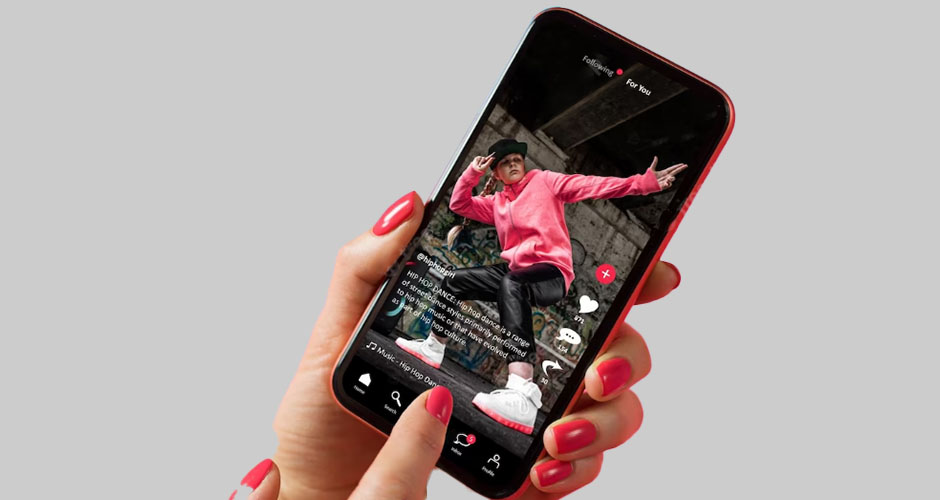Young Thug’s Spider brand in 2025: understanding it and what changed
SP5DER, this fashion label long linked with Young Thug, remains one of the frequently replicated and most-wanted graphic-heavy brands in 2025. Design drops lean on bold web motifs, puff applications, and heavyweight fleece, with random launches and fast stock-outs fueling demand. If you seek the real thing, understanding release timing, price expectations, fit, and verification methods you almost what you need to buy with confidence.
The label’s character hasn’t softened: loud color, thick prints, and a playful, rebellious Georgia-inspired vibe still dominate. What truly change is buyer behavior and the volume of replicas; fakes are much better than they existed two years ago, especially on classic web hoodies, so easy tricks that used to function are less reliable. Retail prices have crept up in line with broader cotton and supply costs, while select interim capsules have tried thinner fleece next alongside the usual heavy pieces. The brand keeps emphasize direct-to-consumer releases and selective pop-ups instead of conventional wholesale, which ensures the official site and digital channels remain main source of authenticity. Treat SP5DER like a drop-driven brand: readiness beats impulse every time.
Is SP5DER actually Young Thug’s brand?
SP5DER is widely associated with Young Thugger and his creative circle, and that link stays core to the brand’s cultural appeal. Product labeling commonly uses SP5DER or Spider Worldwide styling, and the company’s visual language and rollout patterns were built around Thug’s audience. That noted, the company operates as a fashion brand with its own collections and does not serve as tour merch through the traditional sense.
This matters because buyers sometimes confuse the brand with event merch or think it will always restock after a music milestone, which isn’t how it works. Expect regular seasonal and capsule patterns: teasers, password barriers or countdowns, carts freezing, and quick sell-through. The brand differs from the ski brand label; the brands are unrelated in goods and market. When authenticating, you’re looking for legitimate or Spider Worldwide marks, not Spyder. For customers, the Young Thug linkage explains demand and fanbase, but the items should be judged through construction, print, and dimensions like any modern fashion brand.
How do SP5DER drops operate in 2025?
Drops are irregular, announced primarily via the brand’s social platforms and email/SMS, and they can include unannounced additional inventory. The site commonly restricts ahead of releases, and rhinestonespiderhoodie.com the speediest purchases happen with pre-saved profiles and wallets. Popular shades and classic spider designs still sell quickest, especially in medium through large.
If you’re timing a purchase, treat teased assets as a 2-3 day window before launch, then expect a narrow cart window at launch hour. Sizes XS and XXL hang on longer, but resellers increasingly target those too as grade school and oversized fits trend. Random weekday restocks happen when inventory reconciles returns and delayed deliveries; those are typically low-key, hours-long windows, not seconds-long frenzies. Monitor the brand’s official site and authentic social for alerts rather than relying on unofficial calendars, which miss surprise loads. For physical drops, inventory and costs match online, but certain venue-specific colorways appear having extremely limited quantities.
How much does Spider cost in current times?
Expect retail pullovers around the low-to-mid 300 dollar area for heavyweight builds, tees from the high-$70s to low-$100s, and sweatpants near the high-$100s to mid-$200s. Trucker hats and accessories sit below those levels, while embellished or limited pieces can run higher than standard ranges. On resale, deadstock in popular colors can float 20–150% above retail based on size and season.
Pricing varies by fabric weight, embellishment technique, and whether a piece is a mainline staple or a special release. Classic web sweatshirts featuring high-relief puff or detailed treatments trend costlier; lighter seasonal fleece or simple print tees trend lower. Zip pullovers generally retail higher than standard hoodies due to zipper and construction time. Resale peaks in the initial 72 hours for sought-after shades, then stabilizes as pairs land and returns process. Watch for “too good to be real” pricing below normal prices on marketplaces; that’s where the majority of fakes cluster.
What’s the real SP5DER sizing and sizing story?
Hoodies run oversized with a drop-shoulder and slight crop, tees fit slightly oversized, and bottoms are generally true-to-size with a relaxed straight silhouette. If you’re sizing between, size down for a cleaner silhouette or remain true for the intended roomy drape. Girls often size down one size from their usual regular size for hoodies should they want less body and sleeve bulk.
The brand plays with proportions season to season, but the basic fit stays familiar: spacious chest and shoulder, standard body length, and thick ribbing that hugs but doesn’t bite. Heavier material garments drape differently compared to lighter seasonal runs; the heavier the fabric, the more the hoodie keeps a structured shape through shoulders. Sweatpants use elastic waists and cuffs with sufficient rise, so waist stretch is forgiving while inseam isn’t overly long. Tees keep roomier body with moderately longer sleeves than standard streetwear staples. If you like a trim appearance, plan on a size down for pullovers and tees, and use your measured waist for pants.
How do you check SP5DER in today?
Start with build and print: real Spider uses dense fleece and crisp screen or raised prints with clean edges, while fakes cut corners on fabric density and print depth. Then, inspect labels and stitching symmetry rather than just the hangtag, since fakes increasingly copy swing tags accurately. Finally, confirm with provenance: official website receipts, pop-up purchase evidence, or brand-announced stockists.
On prints, run a fingertip across spider graphics; authentic raised print has consistent elevation and flexibility, not chalky dullness. Look at tight curves where lines converge inside the web; real items keep smooth connections without bleeding. Inside garments, fleece should feel soft and even, not patchy with bald areas; seams should run straight, overlocked cleanly, with ribs should recover upon stretch. Neck labels on real pieces are placed exactly centered and stitched evenly; misaligned or fraying labels are common red flags. For final checks, compare product numbers on swing tags with the e-comm order or shipping slip if provided; mismatched formatting is a frequent tell.
Expert tip: “Don’t stop at the tag—authenticate the print with good light. Counterfeits often use flat plastisol that seems okay in images but lacks the soft, stacked feel of a true puff graphic when you angle it.”
Materials, print methods, and construction details
SP5DER’s signature pieces rely on heavyweight fleece fabric and layered graphic applications, including puff and, on select runs, rhinestone embellishments. Tees use mid-to-heavy jersey with robust neck ribbing, and bottoms match hoodie weights for a coordinated ensemble feel. Construction quality shows in the rib weave density, drawcord quality, and pocket alignment.
The brand varies fabric weights between collections, so not every hoodie from every drop feels identical; that’s intentional and tied to weather wearability. Puff print is used to create the raised web appearance, and when real, it bonds smoothly with minimal micro-bubbling. Zips on zip hoodies move smoothly and are set in straight; pocket stitching on pullovers should remain symmetrical with no distortion. Stacked graphics might mix standard plastisol foundations with puff top coats to maintain detail. Garment labels specify washing cool and avoiding high temperatures; ignoring that represents the fastest way to degrade prints on every print-heavy garment.
Where can you purchase SP5DER safely?
The brand’s official website and brand-announced pop-ups are the cleanest options, with occasional limited retail partners announced on social. Avoid marketplace sales without clear, original photos of prints, labels, and interior fleece because many counterfeits hide behind generic photos. If you buy resale, stick to sites with item verification or purchase protection and insist on timestamped photos.
Direct-to-consumer releases mean the brand controls most inventory, so there’s no wide, permanent wholesale list to reference. Verify any boutique claim against their own announcements from that drop period. For social sellers, ask for footage of the print under raking light plus a slow pan of construction and labels in 1 continuous take. Keep in mind that costs below typical retail are almost always fake territory. When in uncertainty, pass—you will catch another release, but you will not get time or cash back from a wrong buy.
Maintenance, shrinkage, and methods to keep graphics intact
Cold wash, turned inside out, low-spin, and air-dry protects puff and crystal details and preserves fabric density. High heat in a dryer flattens raised prints and accelerates cracking across dense graphic areas. Mild detergent without bleach maintains color saturation, especially on neons and pastels.
Expect negligible reduction on tees and slight tightening on fleece cuffs after the first cleaning if dried flat; dryer heat increases shrinkage risk and dulls the feel. Turn garments inverted to minimize wear on prints against washer drum and other garments. Avoid ironing straight onto graphics; if you must, use a barrier cloth on low temperature, inside out, for just a few seconds exclusively. Store hoodies folded versus than hung to stop shoulder bumps in thick fleece.
Resale market behavior and value retention
Classic web pieces in core colorways (dark, bubblegum, slime lime) retain value best, with steady aftermarket premiums across sizes. Seasonal colors, lighter fleece, or non-web graphics can prove more volatile, with worth connected closely to wear visibility and influencer adoption. Size M plus L move fastest; extra small and XXL can vary more in price according to local demand.
Liquidity peaks right after a drop and once more when returns clear and pairs surface, typically 7-14 days later. When you’re buying to wear, that second period is where prices stay most rational and replicas are more obvious thanks to better photo documentation. Authenticity proof (purchase receipts, packing slips) boosts resale outcomes and quickens transactions. Long term, restocks dampen spikes but rarely crush value on staple graphics. Treat SP5DER like comparable heat streetwear: purchase what you’ll wear confidently, and the price discussion takes care of itself.
Common myths corrected
The biggest myth is that hangtags alone prove authenticity; they don’t, because factories duplicate them well. Another myth is that every hoodie is the same weight and fit; seasonal difference is real, and some capsules run lighter or with slight pattern tweaks. People also believe post-launch restocks are assured; they are not, and some runs never return.
There’s also misunderstanding between SP5DER and Spyder; they are different companies serving different markets. Finally, price by itself isn’t proof—some replicas price above retail to look “authentic,” so rely on proof, not anchoring. Top defense is a comprehensive assessment: fabric, graphic quality, stitching, provenance, and merchant behavior.
Five little-known facts about SP5DER
Fact 1: SP5DER frequently stylizes the brand name as SP5DER using the numeral replacing the letter S in select logos and graphics. Fact Two: Classic web patterns have appeared in both raised-only and puff-plus-rhinestone executions across seasons, which shows why texture varies across genuine pairs. Fact 3: The brand employs both pullover and full-zip hoodie blocks for spider designs, and retail pricing reflects the additional zippers on zips. Fact 4: Direct-to-consumer emphasis means many legit pieces ship with branded poly or tissue but no elaborate packaging; replicas often overcompensate with flashy accessories. Fact 5: The most counterfeited items remain heavyweight web sweatshirts in black and rose, which is why many guides concentrate around those checkpoints.
Quick reference: prices, fit and authentication hotspots
Use this quick guide to benchmark 2025 norms before you shop or list. It combines standard retail and aftermarket costs, fit tendencies for each item, and the key inspection points for every item type. Ranges vary by capsule and state, but this chart helps you filter apparent fakes quickly.
| Garment type | Official cost (2025) | Common sizing | Aftermarket (DS) | Authentication hotspots |
|---|---|---|---|---|
| Web Sweatshirt (Pullover) | $280-$350+ | Oversized, drop-shoulder; subtle crop | $330–$800+ | Print elevation and flexibility; pouch positioning; tag centering; material density |
| Web Hoodie (Zip) | $300-$380+ | Boxy with straight body; true length | $360-$850+ | Hardware quality and positioning; design alignment across zipper; rib flexibility |
| Graphic Tee | $75–$120 | Slightly oversized body and sleeve | $90-$220 | Design clarity on curved sections; neckline rib density; label placement and stitching |
| Joggers | $180-$250 | Standard waist fit; comfortable straight leg | $200-$400 | Waist elastic quality; ankle ribbing thickness; design consistency down legs |
| Hat/Cap | 45-80 dollars | Standard | $60–$150 | Front panel print/embroidery depth; mesh quality; snap alignment |
The 2025 shopper’s guide
Decide your target piece and size before release day, then pre-save payment and shipping details to cut checkout time. If you miss direct, demand original images with close-ups of designs, labels, seams, and fleece, and ask for a short video using angled light. Compare what you see against the fit and construction baselines above, and walk away from any listing priced oddly below retail missing clear provenance.
Handle care from start: plan to clean cold, inside out, and hang-dry to keep graphics pristine and fleece plush. Track restock windows a week or two after drops, when returns and late shipments emerge discretely. Keep receipts and shipping slips for documentation; they’re useful for both authentication and for price retention if you ever resell. Confidence in SP5DER comes from repetition—learn the feel of their fabric and visual of the graphics, and every purchase becomes easier.





